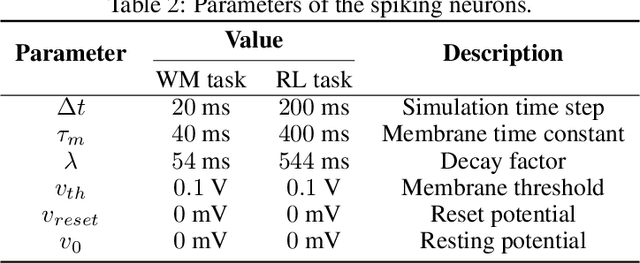Metaplasticity: Unifying Learning and Homeostatic Plasticity in Spiking Neural Networks
Paper and Code
Aug 23, 2023



The natural evolution of the human brain has given rise to multiple forms of synaptic plasticity, allowing for dynamic changes to adapt to an ever-evolving world. The evolutionary development of synaptic plasticity has spurred our exploration of biologically plausible optimization and learning algorithms for Spiking Neural Networks (SNNs). Present neural networks rely on the direct training of synaptic weights, which ultimately leads to fixed connections and hampers their ability to adapt to dynamic real-world environments. To address this challenge, we introduce the application of metaplasticity -- a sophisticated mechanism involving the learning of plasticity rules rather than direct modifications of synaptic weights. Metaplasticity dynamically combines different plasticity rules, effectively enhancing working memory, multitask generalization, and adaptability while uncovering potential associations between various forms of plasticity and cognitive functions. By integrating metaplasticity into SNNs, we demonstrate the enhanced adaptability and cognitive capabilities within artificial intelligence systems. This computational perspective unveils the learning mechanisms of the brain, marking a significant step in the profound intersection of neuroscience and artificial intelligence.
 Add to Chrome
Add to Chrome Add to Firefox
Add to Firefox Add to Edge
Add to Edge